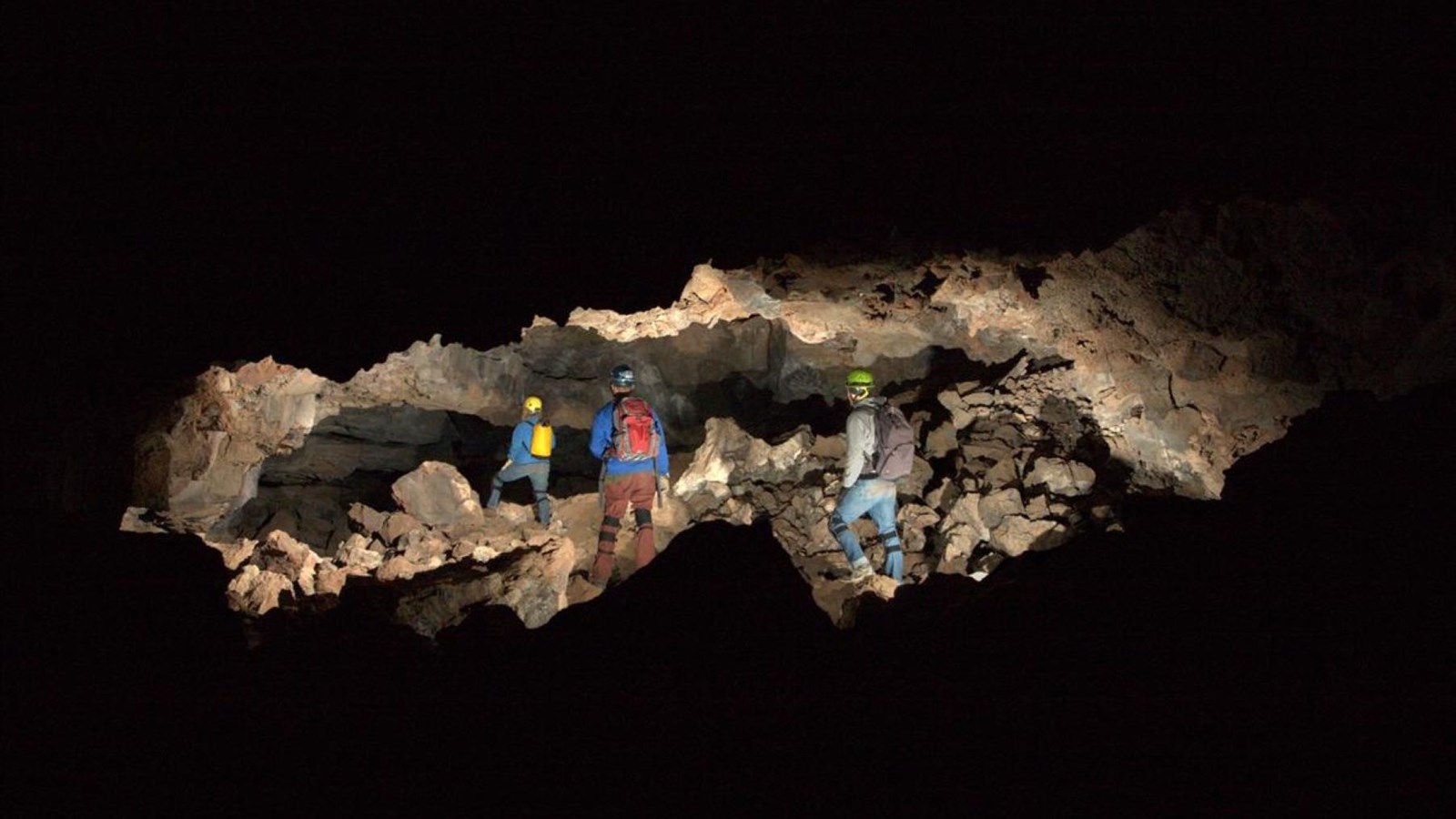Last updated: July 6, 2023
Place
Junction Cave

Image Copyright--Kenneth Ingham
Quick Facts
Location:
34.96911,-108.003
Designation:
National Monument
Amenities
1 listed
Historical/Interpretive Information/Exhibits
Junction Cave is a lava tube created by the lava flows from nearby El Calderon Cinder Cone. At 60,000 years old, this is one of the oldest lava tubes in El Malpais National Monument.
Junction Cave is closed to the public for natural resource protection. Learn more about caving and caving safely.
Trogloxenes typically live above ground and do not depend on the cave for survival. Bats and mice are examples of trogloxenes. Troglophiles may live their entire lives in the cave, but are not fully adapted to the cave environment. Some spiders and beetles are examples of troglophiles. Troglobites live their entire life in the cave and are completely dependent on the cave for survival. Special kinds of tiny, all white mites and insects are two types of troglobiotic species found in Junction Cave.
The impact on agriculture may be profound - these millions of bats ate crop pests. Farmers may now have to use more pesticides to kill insects and grow their crops.
WNS is named for a white fungus found on bat muzzles and wings. The fungus prefers cold, humid temperatures found in caves and mines. It strikes bats when they are most vulnerable--during hibernation. It appears that the fungus creates and irritation that invades the bat's skin, causing bats to wake up and use energy reserves needed to hibernate. They then starve or freeze to death.
Junction Cave is closed to the public for natural resource protection. Learn more about caving and caving safely.
A Living Laboratory
In a 1995 study of caves in El Malpais, scientists found that Junction Cave had more cave-adapted species than any other cave surveyed at that time. Most of the life in this cave is small to microscopic and lives in dark corners, under rocks, and in deep cracks. Scientists divide the life found in caves into four categories: accidentals, trogloxenes, troglophiles, and troglobites. Accidentals can be anything from moths to animals that wander into a cave. The other types of cave life generally show som type of adaptation that allows them to use or live in the cave.Trogloxenes typically live above ground and do not depend on the cave for survival. Bats and mice are examples of trogloxenes. Troglophiles may live their entire lives in the cave, but are not fully adapted to the cave environment. Some spiders and beetles are examples of troglophiles. Troglobites live their entire life in the cave and are completely dependent on the cave for survival. Special kinds of tiny, all white mites and insects are two types of troglobiotic species found in Junction Cave.
Bats in Peril
A disease called white-nosed syndrome (WNS) is spreading across the United States. Although this disease does not bother humans, it has killed more than 6 million hibernating bats so far and threatens to wipe out entire bat species.The impact on agriculture may be profound - these millions of bats ate crop pests. Farmers may now have to use more pesticides to kill insects and grow their crops.
WNS is named for a white fungus found on bat muzzles and wings. The fungus prefers cold, humid temperatures found in caves and mines. It strikes bats when they are most vulnerable--during hibernation. It appears that the fungus creates and irritation that invades the bat's skin, causing bats to wake up and use energy reserves needed to hibernate. They then starve or freeze to death.
